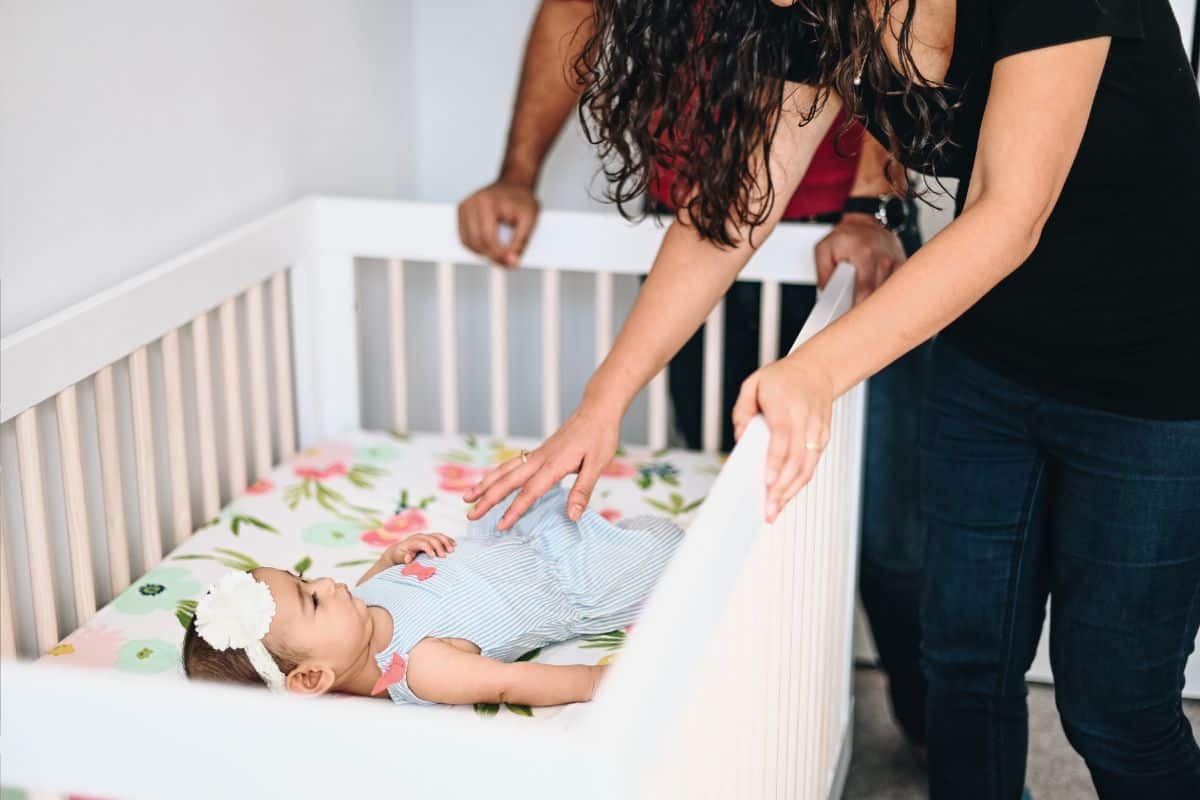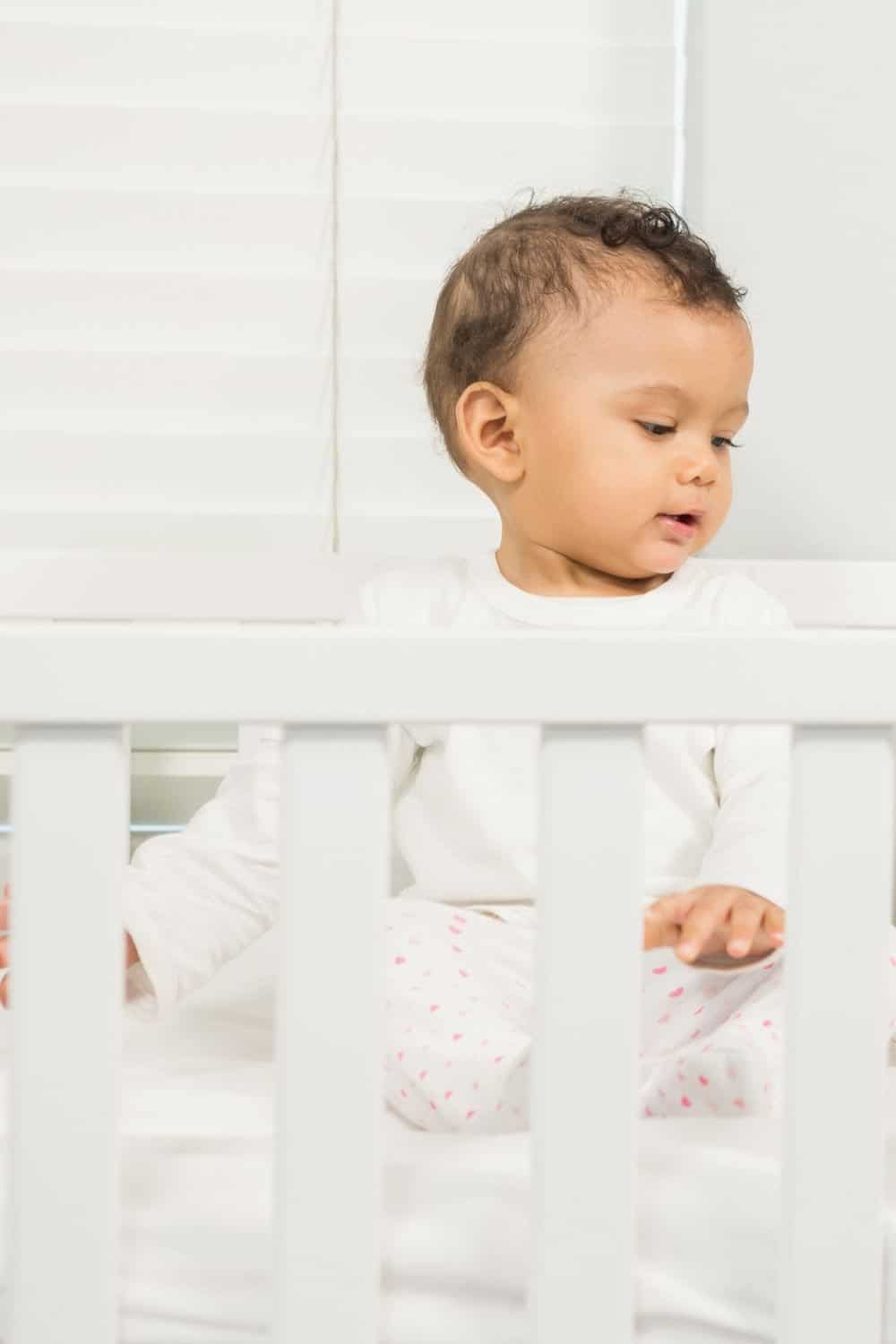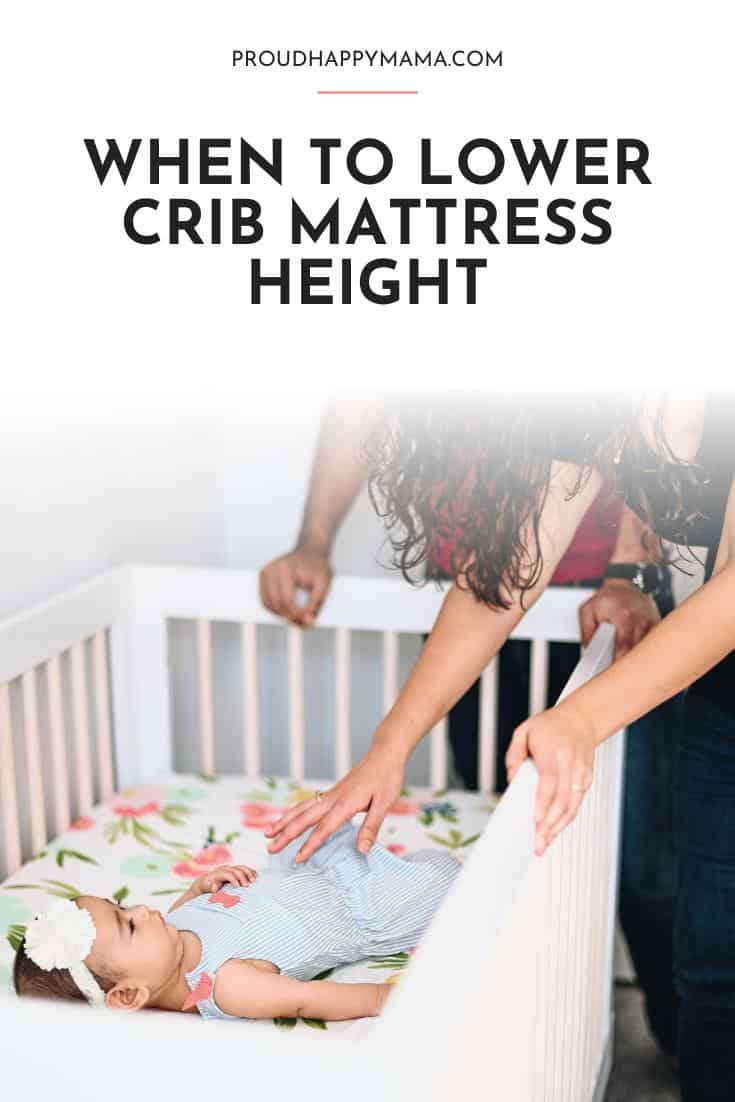When To Lower Crib Mattress
Are you wondering when do you lower the crib mattress for your growing baby’s crib?
Then let us help with our ultimate guide on when to lower crib mattress!
Lowering the mattress on your baby’s crib is an important decision to ensure their safety. That said, it’s not a “one size fits all” sort of deal. It depends on your baby’s growth, height, as well as their ability to move, and these are all subjective factors.
The rule of thumb is to start lowering the mattress height of your baby’s crib when they learn to sit on their own. A baby who’s learned to sit will soon be able to stand unassisted, and if the mattress is too high, this can spell trouble.
So, let’s go over how to ensure your baby’s crib is as safe as possible, as well as how to lower the crib mattress when the time comes.
And if you love this guide on when should you lower the crib, make sure to check out these guides on can a baby sleep in a playpen instead of a crib?, best cribs for twins, how many crib sheets do I need?, and best cribs with changing station.

When To Lower Crib
Before we dive in and take a look at when to lower the crib for your baby, let’s take a look at why the height of your crib mattress matters.
Why Put the Crib Mattress on the Highest Setting?
Almost all modern factory-made cribs are made to support three mattress height settings. You usually start with the highest setting because it’s much easier and safer to place the baby in their crib if the mattress is high.
This is especially true if the mother has just given birth and is recovering. So, bending down too far can be outright impossible or severely painful in the case of a C-section or even a natural birth.
It’s also safer because you have to lower the baby into their crib from a shorter distance, so chances for accidental bumps are much less likely.
Last but not least, it’s much easier on the parents’ backs in the long term. Whilst you can opt for cribs for shot moms to help with reach, back injuries from bending down too far without engaging your knees can cause severe discomfort. They can prevent you from being your active self and caring properly for your baby, as well.
That said, if you’re comfortable with putting your baby to sleep in the crib’s lowest setting, you can set it up like that from the beginning with no issues whatsoever.

When to Lower Crib Mattress
Deciding when to lower the crib mattress should come after you notice how fast your baby is developing.
Sitting up unsupported is a great milestone for your baby’s independence as it means they can engage most of their muscles at will. It also means that soon enough, they’ll be able to use the railings on their crib to guide them to stand up on their own.
For most children, this milestone happens between 5 and 8 months old. Then again, this isn’t standard and is just the average for most kids, so it’s important to keep an eye out for your baby’s mobility and activity levels.
It could be some time before your baby can go from standing up to hauling their body over the crib to get out, but you shouldn’t take any risks. As soon as your baby can sit upright, you should lower the crib mattress to the medium or lowest setting.
How to Lower a Crib Mattress
Most manufacturers will list in detail the steps to adjust the mattress level on the crib. However, they almost all share the following instructions:
- Remove all bedding from the crib; any sleep sack, sheet, fitted sheet, or mattress pad/cover should be put aside.
- Remove the mattress completely from the crib frame. Do not attempt to adjust the mattress height with the mattress still in place, as it might hinder the proper tightening of screws or bolts and checking frame security.
- Check the manufacturer’s instructions for the positions of the screws and the mattress height levels.
- Unscrew all the screws and put them to the side.
- Adjust the mattress platform height and screw it in place.
- Check for sturdiness by moving each of the crib posts sideways to make sure the crib isn’t moving.
- Check the frame of the crib and the railings for any splinters or sharp edges. Make sure to remove any splinters and sand down any unfinished surfaces to avoid possible injuries.
- Replace the mattress, mattress cover, fitted sheet, and sleep sack. Make sure nothing is loose or out of place to avoid suffocation hazards.
What’s a Safe Setup for My Baby’s Crib?
Now that we’ve tackled the mattress height issue, let’s go over other important tips to make the sleeping setup of your baby as safe as possible.
These tips are presented according to the guidelines of the American Academy of Pediatrics (AAP).
- Install your baby’s crib away from any curtains, drapery, or dangling cords to prevent the risk of strangulation.
- Make sure the mattress is perfectly fitted to the crib frame. If you can insert more than two fingers’ width between the mattress and the frame, replace the mattress with a better-fitting one.
- Do not include any stuffed toys, pillows, blankets, sheets, bumper pads, or sleep positioners in your baby’s crib while your baby is sleeping. These increase the risk of suffocation and are a huge culprit in Sudden Infant Death Syndrome (SIDS).
- If the crib has a mobile, make sure it’s securely attached and out of the baby’s reach. Remove any mobile when your baby is about 5 months old.
- Avoid using loose blankets that can obstruct your baby’s breathing if they move to the side. Instead, opt for weather-appropriate clothing or a sleep sack.
- Check weekly on the condition of your baby’s crib to avoid missing any signs of wear or any structural issues that could cause the crib to collapse. Older babies can be very active while playing and their movements could potentially worsen pre-existing damage to the crib.
Final Thoughts on When Do You Lower The Crib
When to lower a crib mattress?
The answer to this question relies on the growth and development of your baby. However, the general rule is to lower the crib mattress when your baby is able to sit up on their own.
Sitting upright unsupported closely precedes being able to stand unassisted. If the crib railings are too low compared to the baby’s height, there’s a risk they can fall over to the other side.
That’s why it’s important to keep an eye on your baby’s level of mobility and activity and adjust the crib mattress when it looks like they’re capable of standing up.
If your baby standing in crib, then lower the crib immediately.
We hope this guide has been helpful in helping you decide when you should lower a crib mattress.
And if you’re looking for more great guides, then check out these guides on where to put a humidifier in a nursery, best fans for nursery, when can babies sleep with a blanket, and best nightlight for baby.

